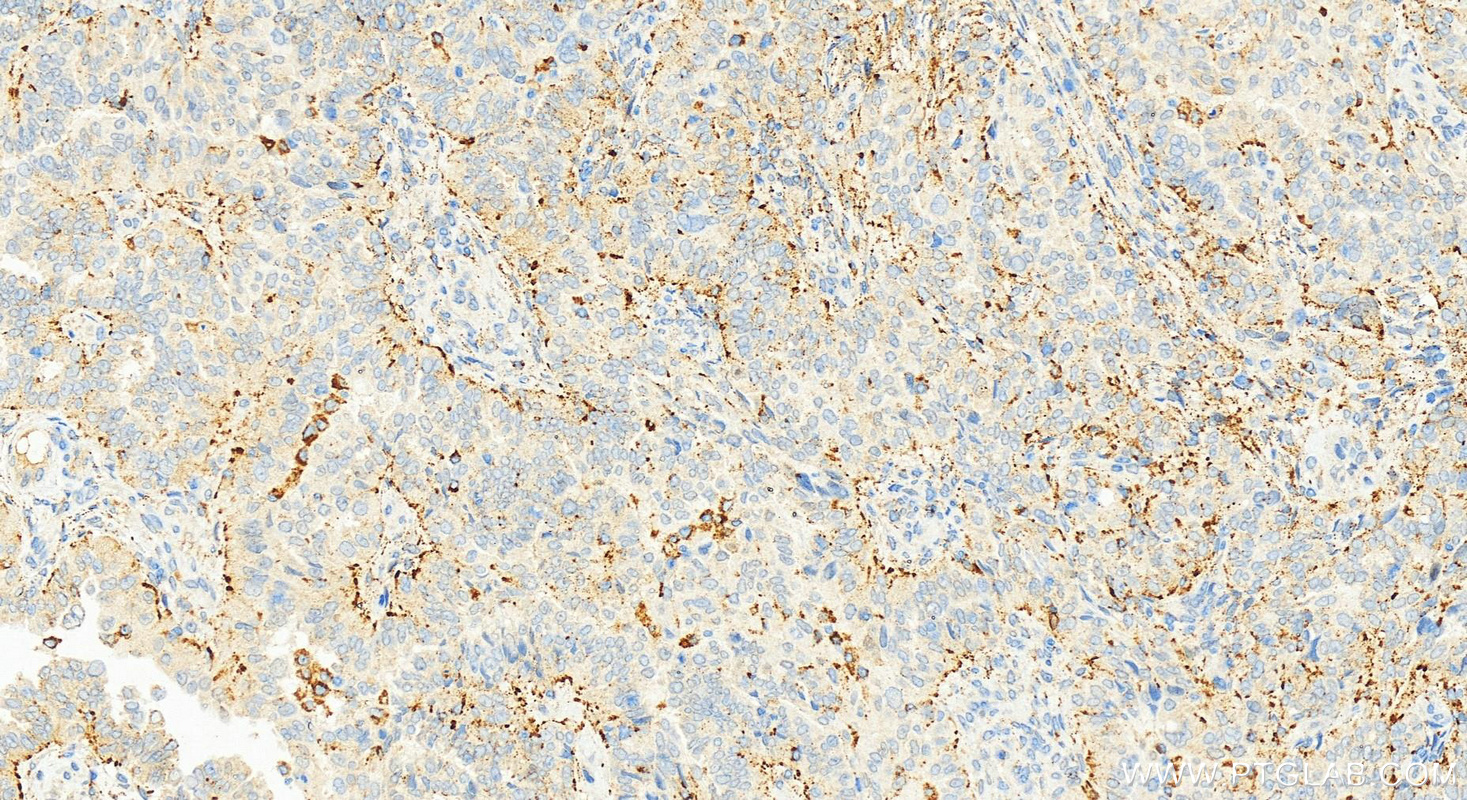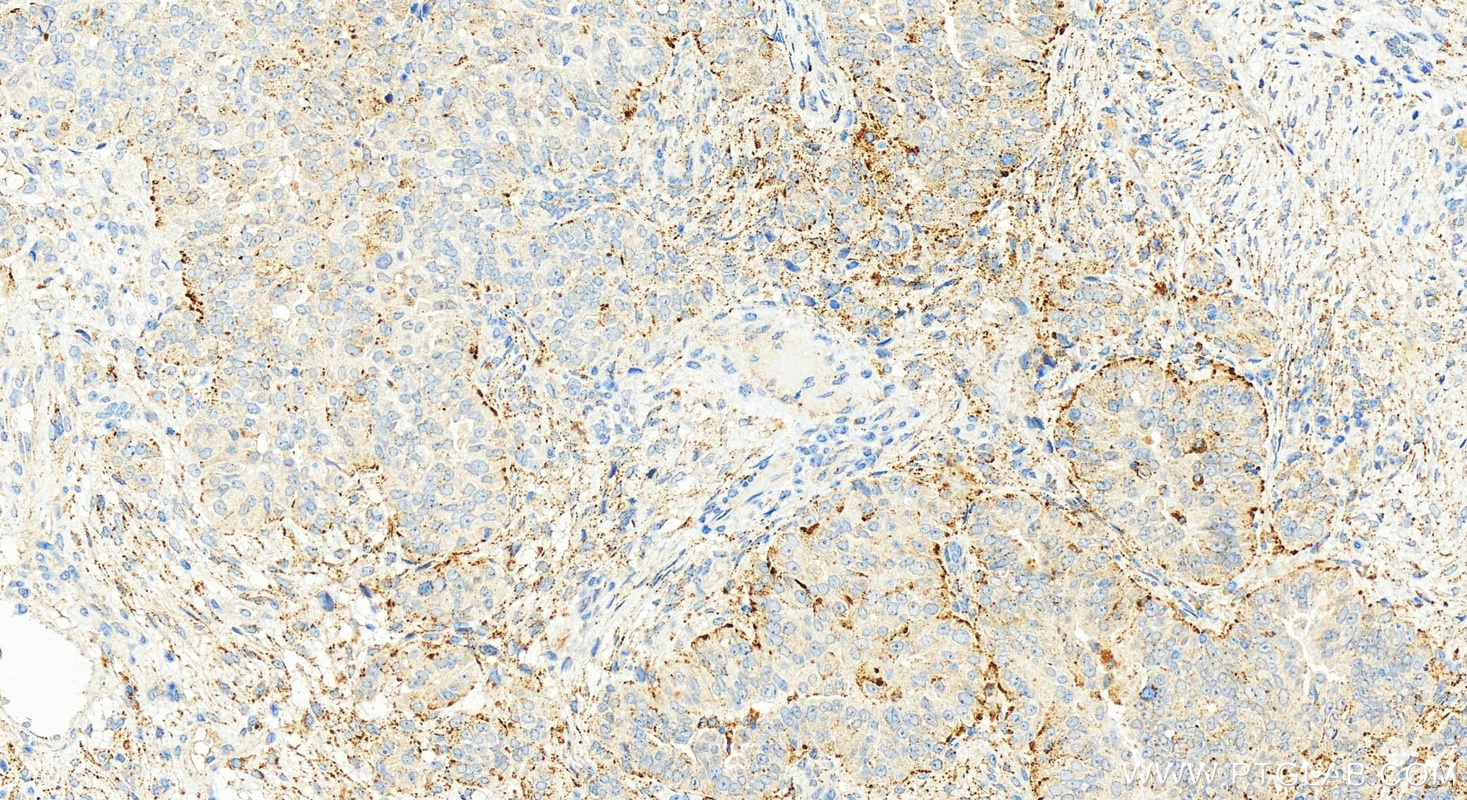验证数据展示
经过测试的应用
| Positive WB detected in | HT-29 cells, human placenta tissue |
| Positive IHC detected in | human ovarian cancer, human placenta tissue Note: suggested antigen retrieval with TE buffer pH 9.0; (*) Alternatively, antigen retrieval may be performed with citrate buffer pH 6.0 |
推荐稀释比
| 应用 | 推荐稀释比 |
|---|---|
| Western Blot (WB) | WB : 1:2000-1:14000 |
| Immunohistochemistry (IHC) | IHC : 1:200-1:800 |
| It is recommended that this reagent should be titrated in each testing system to obtain optimal results. | |
| Sample-dependent, Check data in validation data gallery. | |
发表文章中的应用
| WB | See 1 publications below |
产品信息
83136-3-RR targets TLR3/CD283 in WB, IHC, ELISA applications and shows reactivity with human samples.
| 经测试应用 | WB, IHC, ELISA Application Description |
| 文献引用应用 | WB |
| 经测试反应性 | human |
| 文献引用反应性 | human |
| 免疫原 | TLR3/CD283 fusion protein Ag34044 种属同源性预测 |
| 宿主/亚型 | Rabbit / IgG |
| 抗体类别 | Recombinant |
| 产品类型 | Antibody |
| 全称 | toll-like receptor 3 |
| 别名 | TLR3, 230445G4, CD283, toll like receptor 3, Toll-like receptor 3 |
| 计算分子量 | 904 aa, 104 kDa |
| 观测分子量 | 120 kDa, 68 kDa |
| GenBank蛋白编号 | BC094737 |
| 基因名称 | TLR3 |
| Gene ID (NCBI) | 7098 |
| RRID | AB_3670837 |
| 偶联类型 | Unconjugated |
| 形式 | Liquid |
| 纯化方式 | Protein A purfication |
| UNIPROT ID | O15455 |
| 储存缓冲液 | PBS with 0.02% sodium azide and 50% glycerol{{ptg:BufferTemp}}7.3 |
| 储存条件 | Store at -20°C. Stable for one year after shipment. Aliquoting is unnecessary for -20oC storage. |
背景介绍
TLR3 belongs to the Toll-like receptor family which is important in the innate immune response to pathogens. TLRs are highly conserved from Drosophila to humans and share structural and functional similarities. TLR3 is a nucleotide-sensing TLR that is activated by double-stranded RNA. Upon recognition of dsRNA, TLR3 transmits signals via the adaptor protein TICAM-1/TRIF, leading to the induction of type I IFN, cytokine/chemokine production, and dendritic cell (DC) maturation (PMID: 18262679). Western detected full-length (∼120 kD) and cleaved (∼70 kDa) TLR3 (PMID: 28717003).
实验方案
| Product Specific Protocols | |
|---|---|
| WB protocol for TLR3/CD283 antibody 83136-3-RR | Download protocol |
| IHC protocol for TLR3/CD283 antibody 83136-3-RR | Download protocol |
| Standard Protocols | |
|---|---|
| Click here to view our Standard Protocols |





